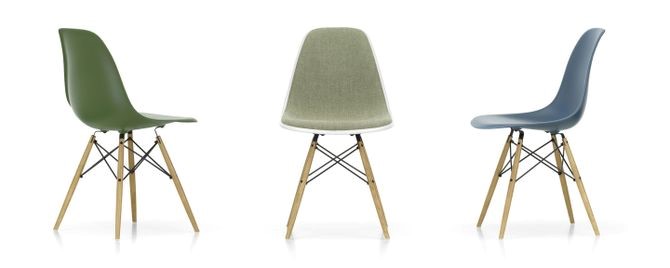EU Court of Justice Rules on Copyright Protection for Non-EU Designers of Works of Applied Art: A Kwantum Leap?
What You Need to Know
Key takeaway #1
It is now clear that EU Member States must afford copyright protection to designs or “works of applied art” (i.e., furniture, lighting, apparel, home appliances, etc.) if the harmonized conditions are met, regardless of the country of origin of these works or the nationality of the author. Therefore, non-EU designs are to be copyright protected in the Member States on the same footing as designs originating in the EU.
Client Alert | 16 min read | 10.29.24
On October 24, 2024, the Court of Justice of the European Union (CJEU) handed down its highly anticipated ruling in the Kwantum v. Vitra case (C-227/23). In short, the CJEU held that EU Member States must afford copyright protection for works of applied art (i.e., furniture, lighting, home appliances, etc.) that meet the originality-requirement, regardless of the country of origin of these works or the nationality of the author.
1. BACKGROUND
The parties in the dispute are: Kwantum Nederland BV and Kwantum België BV (here referred to jointly as Kwantum), operators of a chain of budget shops selling interior design articles in the Netherlands and Belgium, and Vitra Collections AG (Vitra), a Swiss company that holds intellectual property rights over designer furniture. Vitra has the iconic “DSW chair” designed by Charles and Ray Eames in its portfolio. Importantly, the designers were both U.S. nationals and the chair originated in the United States. The daughter of the American design duo assigned the rights to the DSW chair to Vitra.

Source: Vitra.com
Vitra alleges copyright infringement by Kwantum. Far from a straightforward infringement case, a complex discussion quickly developed (both in first instance and on appeal) as to whether – as a matter of U.S. law – this particular chair would be copyright protected, or whether chairs in general (as works of applied art) are eligible for copyright protection. More in particular, Kwantum focused on whether Vitra is afforded copyright protection under U.S. law in the Netherlands and Belgium.
The Supreme Court of the Netherlands (Hoge Raad der Nederlanden) referred preliminary questions to the CJEU regarding the interpretation of EU law and the Berne Convention.
2. THE MATERIAL RECIPROCITY CLAUSE IN THE BERNE CONVENTION
The Berne Convention provides that authors who are nationals of one of the signatory countries enjoy the same intellectual property rights in the other signatory countries as do the national authors from those other countries. However, there is an exception in relation to the protection of works of applied art. For such items, there is a “material reciprocity clause”. Under Article 2(7) Berne Convention, works of applied art that originate in countries in which such works are protected solely as designs and models are not entitled to such protection in addition to copyright protection in the other signatory countries. In short, copyright protection is limited for works of applied art that are not protected in the author’s country of origin.
The ratio legis of this provision is the lack of international consensus on the protection of works of applied art. While legislative instruments specifically allow for EU Member States to apply copyright and design right cumulatively, several countries outside the EU exclude or restrict copyright protection of industrial designs. One such country is the United States. Thus, the material reciprocity clause is there to ensure that authors in countries such as the U.S. do not asymmetrically benefit from additional copyright protection in other countries.
In the Kwantum v. Vitra case, Kwantum alleged that, on the basis of Article 2(7) Berne Convention and the material reciprocity clause, the DSW chair could only receive copyright protection if it were also protected under U.S. copyright law. Therefore, the main question was to which extent EU law precludes Member States from applying this criterion of material reciprocity to works of applied art that originate in third countries, in absence of such clause at the EU level.
3. CJEU’S RULING: EU COPYRIGHT GRANTS PROTECTION IRRESPECTIVE OF COUNTRY OF ORIGIN OF A WORK OR ITS AUTHOR
Asked about the applicability of the Berne Convention exception, the CJEU ruled that it does not apply within the EU. All works, including works of applied art, are protected within the Union provided they meet the conditions for copyright protection.
In addition, the CJEU found that the EU legislator, in adopting Directive 2001/29 (the InfoSoc Directive), had necessarily covered all works for which protection is sought in the territory of the EU. The InfoSoc Directive does not include any reference to the Berne Convention’s material reciprocity clause, to any criterion relating to the country of origin of those works or to the nationality of their author. The CJEU added that the application of the material reciprocity clause would undermine the EU’s key objective, namely the harmonization of copyright protection within the internal market, since, under that clause, works of applied art originating in third countries might be treated differently in different Member States.
Therefore, the CJEU ruled that EU law, and specifically the InfoSoc Directive, precludes Member States from applying the Berne Convention’s material reciprocity clause to works of applied art originating from third countries (non-EU countries), whose authors are nationals of those third countries. The CJEU emphasized that it is solely the EU legislator’s role to determine any limitations on copyright protection within the EU.
4. SIGNIFICANCE AND PRELIMINARY REMARKS
Firstly, authors from outside the EU, particularly those originating from countries in which works of applied art are not offered copyright protection (such as US-based designers), can enforce their copyright in the EU, if the work meets the substantive conditions for EU copyright protection. The works of authors anywhere in the world can thus be protected in the EU, regardless of Berne, WCT or WTO membership of the states where they originate. Indeed, this judgment may open the door for many more non-EU designers to claim and enforce copyright in the EU even if they cannot do so in their country of origin. By way of example, the iconic bankers’ lamp ‘Emeralite’, designed and patented in the early 1900s by American engineer Harrison D. McFaddin († 1965), could still be protected under EU copyright.
Secondly, the ruling clarifies that the harmonized EU copyright law under the InfoSoc Directive does not allow Member States independently to apply the Berne Convention’s material reciprocity clause. As in the RAAP-decision (C-265/19), the CJEU reserves this type of limitation to the EU legislature alone – not the national legislatures. This decision reinforces the uniform application of copyright protection across the EU, ensuring that works from third countries receive the same level of protection as those from EU Member States.
Lastly, it is highly likely that this case will turn out to be only the beginning of the debate. Calls for the EU legislator to deal with matters of international application of IP law will almost certainly grow louder in the wake of this judgment. For instance, the European Copyright Society had already raised several points in this respect in its opinion and comment following recent caselaw by the CJEU. And, in any event, it is clear that the judgment will have a significant impact on pending referrals before the CJEU in the Mio and USM Haller cases. This is a saga that will be continued for sure!
Contacts
Insights
Client Alert | 2 min read | 12.19.25
GAO Cautions Agencies—Over-Redact at Your Own Peril
Bid protest practitioners in recent years have witnessed agencies’ increasing efforts to limit the production of documents and information in response to Government Accountability Office (GAO) bid protests—often will little pushback from GAO. This practice has underscored the notable difference in the scope of bid protest records before GAO versus the Court of Federal Claims. However, in Tiger Natural Gas, Inc., B-423744, Dec. 10, 2025, 2025 CPD ¶ __, GAO made clear that there are limits to the scope of redactions, and GAO will sustain a protest where there is insufficient evidence that the agency’s actions were reasonable.
Client Alert | 7 min read | 12.19.25
In Bid to Ban “Woke AI,” White House Imposes Transparency Requirements on Contractors
Client Alert | 5 min read | 12.19.25
Navigating California’s Evolving Microplastics Landscape in 2026
Client Alert | 19 min read | 12.18.25
2025 GAO Bid Protest Annual Report: Where Have All the Protests Gone?





